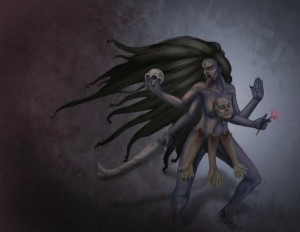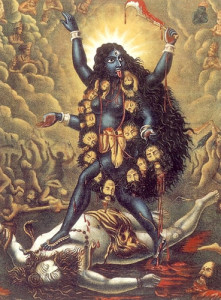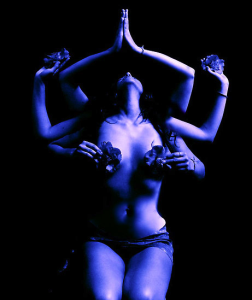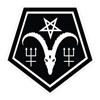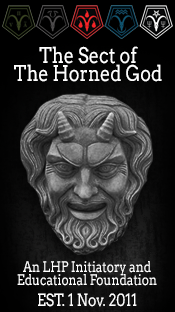Kali: The Dark Mother of the Left-Hand Path
“In the Orient, the gods do not stand as ultimate terms, ultimate ends, substantial beings, to be sought and regarded in and for themselves. They are more like metaphors, to serve as guides, pointing beyond themselves and leading one to an experience of one’s own identity with a mystery that transcends them.”
–Joseph Campbell
No image better represents the left-hand path than Kali. For at its roots, the left-hand path is the feminine path. Kali is the ferocious form of the Mother Goddess. She is represented with perhaps the most intense features among all the world’s deities. She has four arms, with a sword in one hand and the head of a demon in another. The other two hands bless all, and say, “Fear not!” She has two dead heads for her earrings, a string of skulls as necklace, and a girdle made of human arms as her clothing.
Kali’s form is replete with awesome symbolism. Her long, wild black hair, flowing freely, depicts her freedom from conformity. Her wide eyes, alert, ablaze with the fury of two molten pits, is an expression of her relentless intensity. A vertical third eye is in the middle of her forehead represents her omniscience. Kali’s black complexion symbolizes her all-embracing, transcendental nature, visualized as a vortex from which all creation emerges and to which it returns.; and her nudity portrays the primal aspects of Nature.
It is said Kali was born from the brow of the Goddess Durga during one of her battles with the evil forces. As the story goes, while in the heat of battle, Kali was so involved in the killing spree, drunk on the blood of her victims, that she got carried away and began destroying everything in sight. To stop her, Lord Shiva threw himself under her feet. Shocked at this sight, Kali stuck out her tongue in astonishment, and put an end to her homicidal rampage. Hence the common image of Kali shows her in her mêlée mood, standing with one foot on Shiva’s chest, with her enormous tongue sticking out.
As Kali danced upon Shiva, it evolved into a sexual act. She straddled him; she being on top, taking control. Shiva became the passive one. He satiated her desire by offering her sex in which she was in control. He was acted upon, for if Shiva had not given in to Kali, she would have destroyed the world.
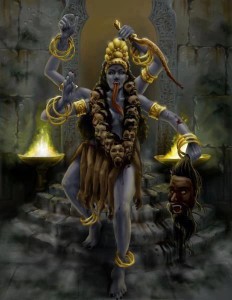
On the left-hand path it is necessary to enter the spontaneous chaos that is our true nature by breaking taboos, and shattering the chains of slave morality. Kali is there to help. She is the great liberator, representing the consuming aspects of reality, but burdened with the task of bringing about self-actualization. One does not worship her, but instead enacts with her divinity from a subjective perspective. But with Kali we risk madness when we let go of the familiar setting of our self-prescribed limitations. In this madness, Kali simultaneously creates and destroys, intoxicated with the paradox that death feeds on life, and life feeds on death — the eternal Wheel of Time. She is in the waning and waxing of the moon, the turning of the seasons, the shedding of the old self for the new, these are all part of her feminine rhythms. Her healing and empowering energy is not just for women, though, but for men as well. Embracing this dark manifestation of the anima shatters illusions and reveals that the repressed feminine aspects regarded as weak, irrational, chaotic, or emotional, are in truth, powerful tools to help lead one to self-deification.
